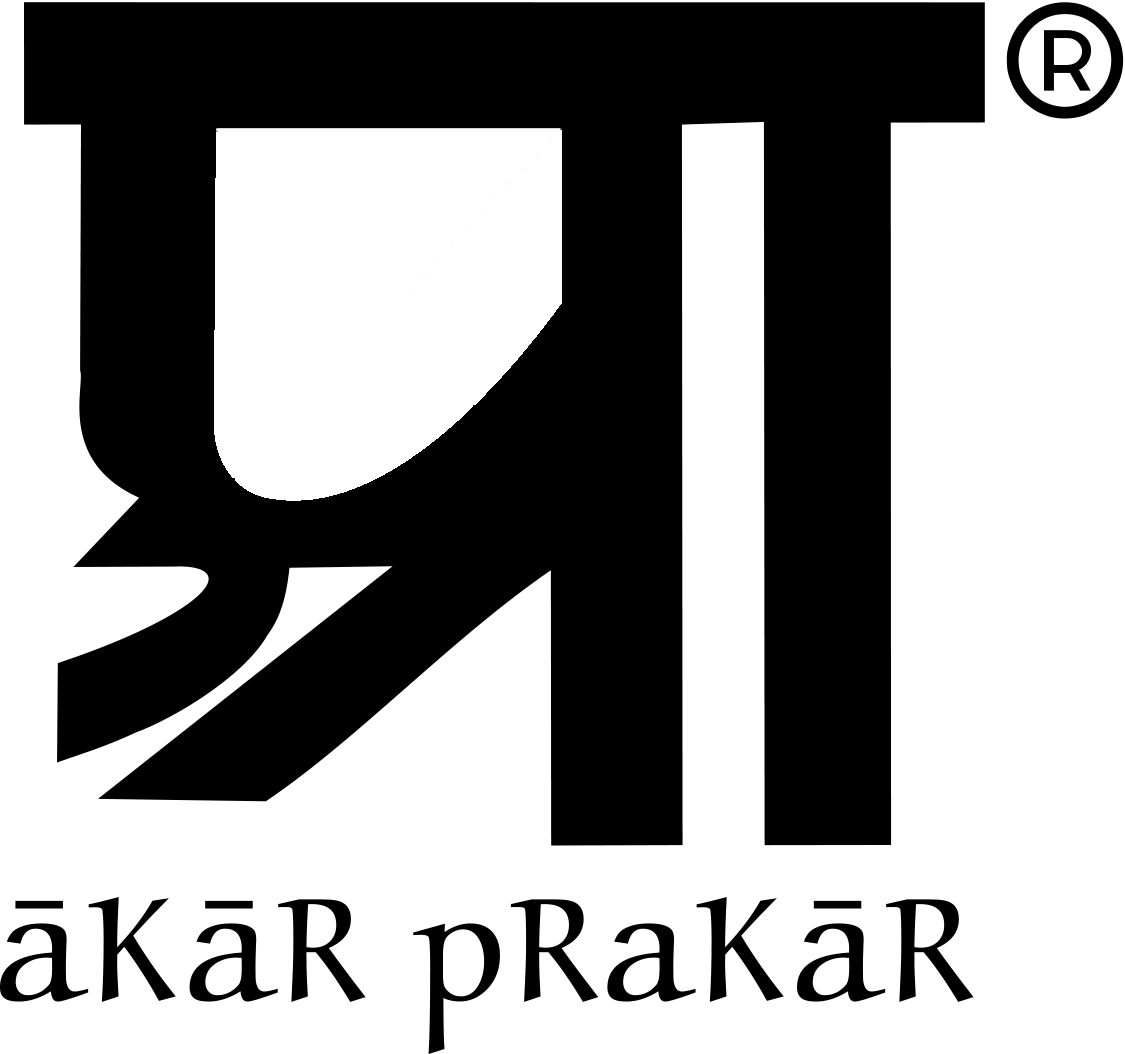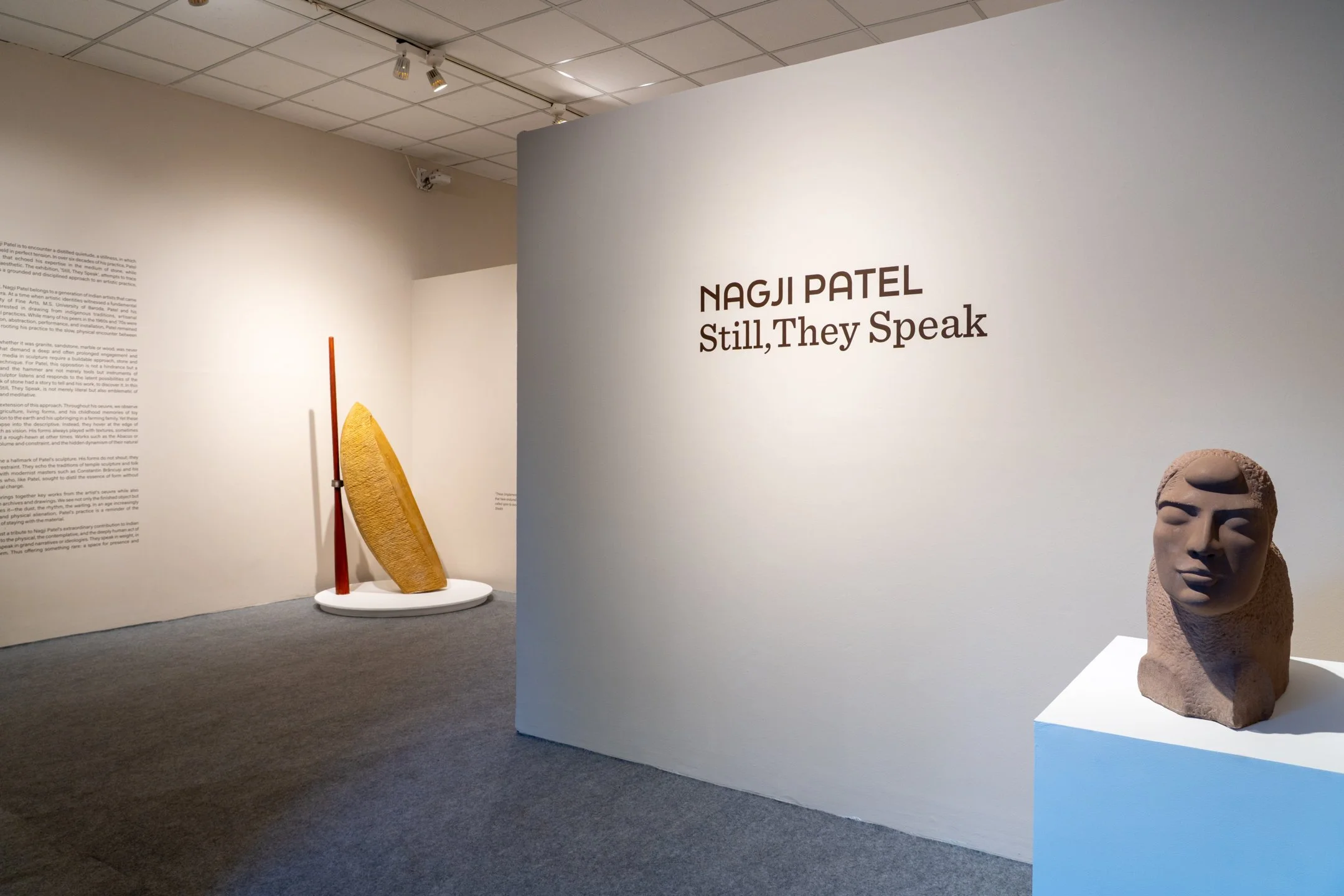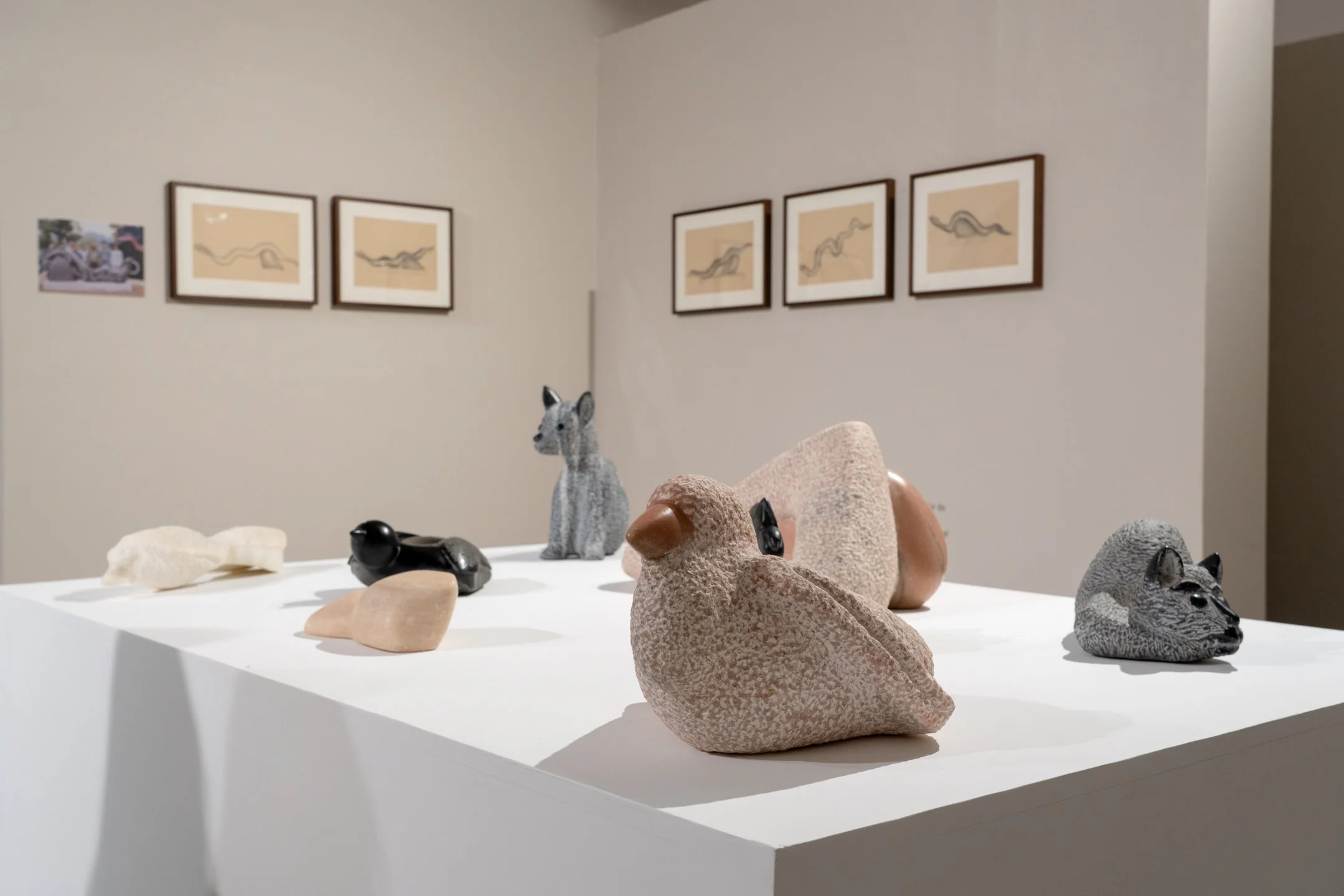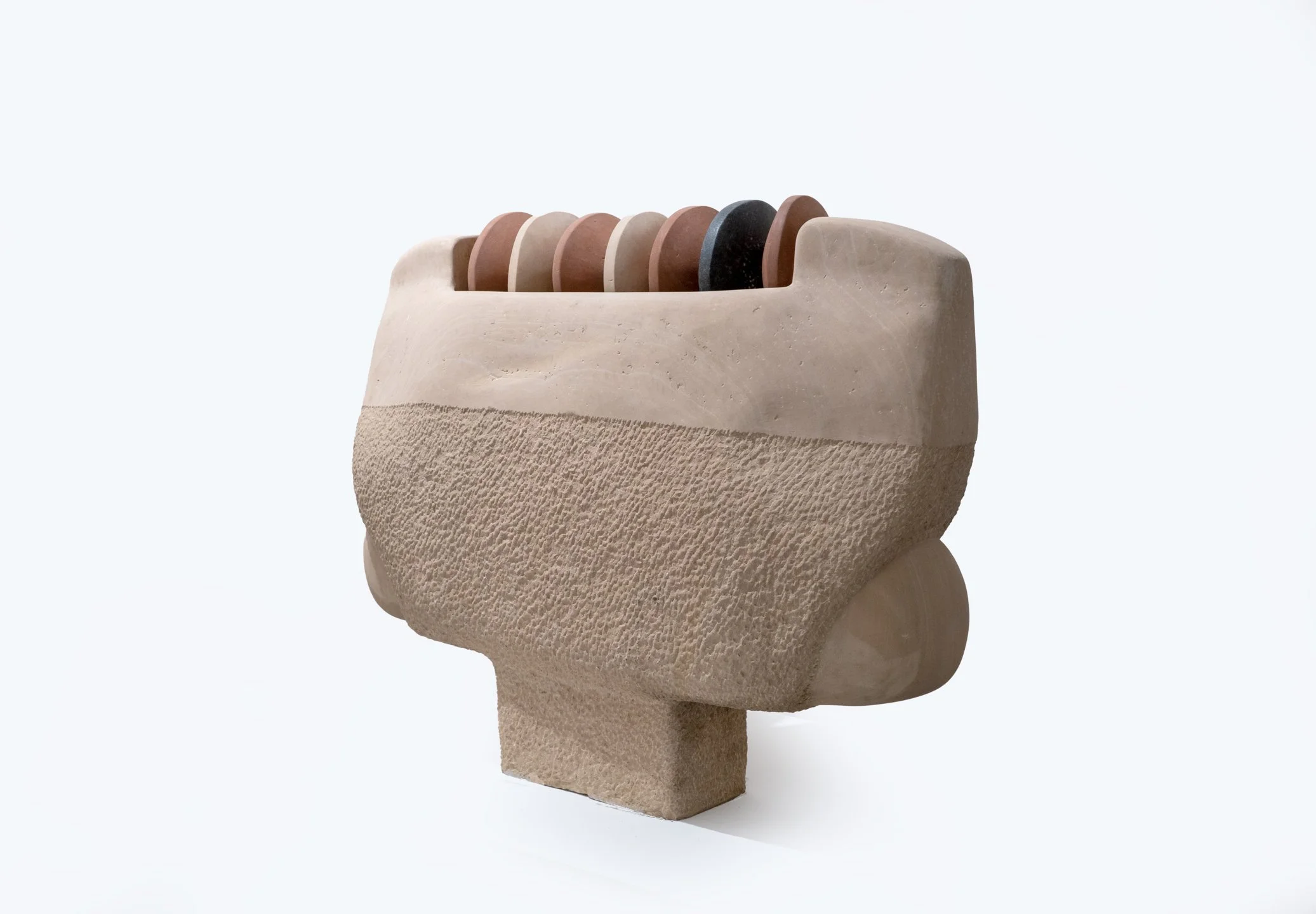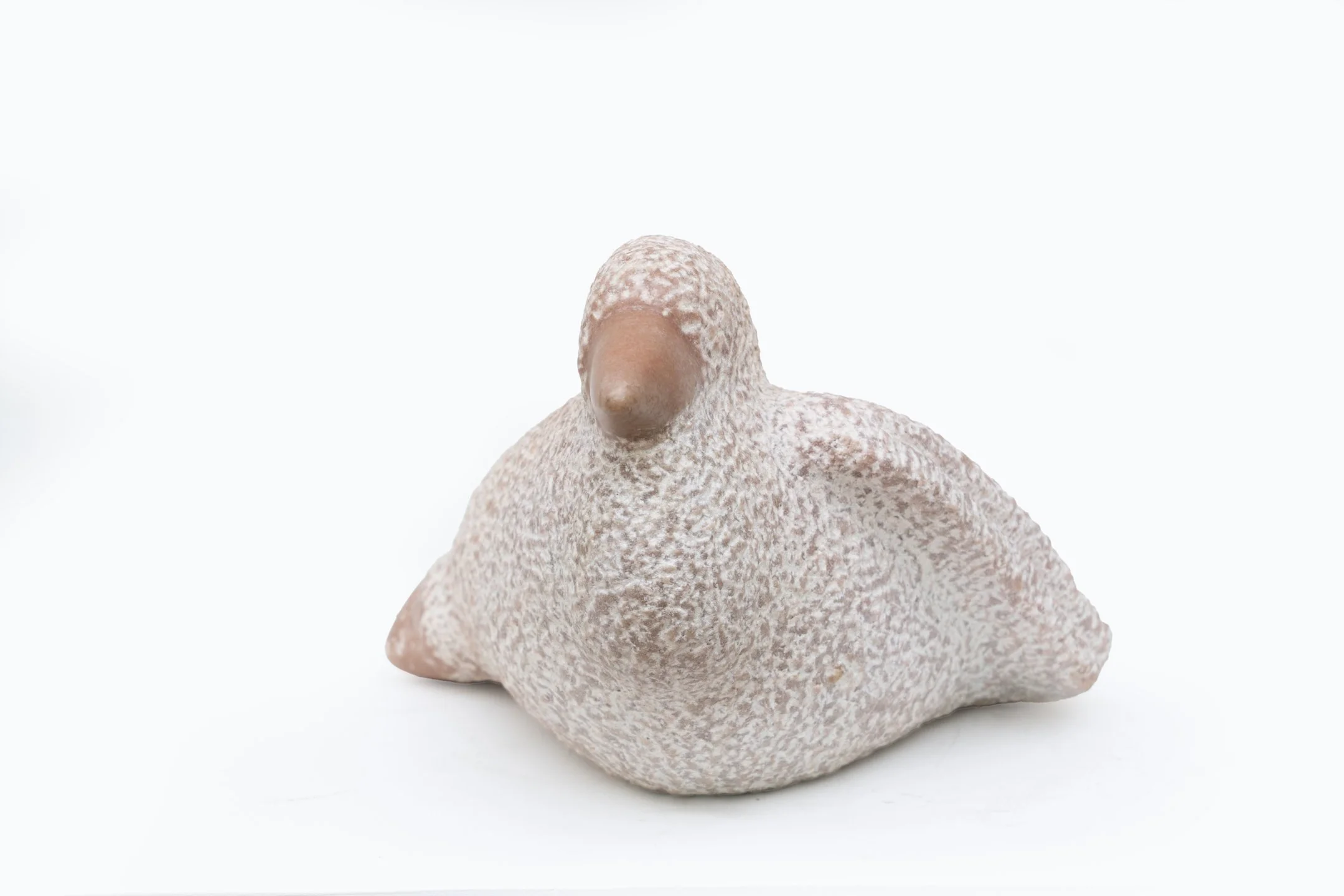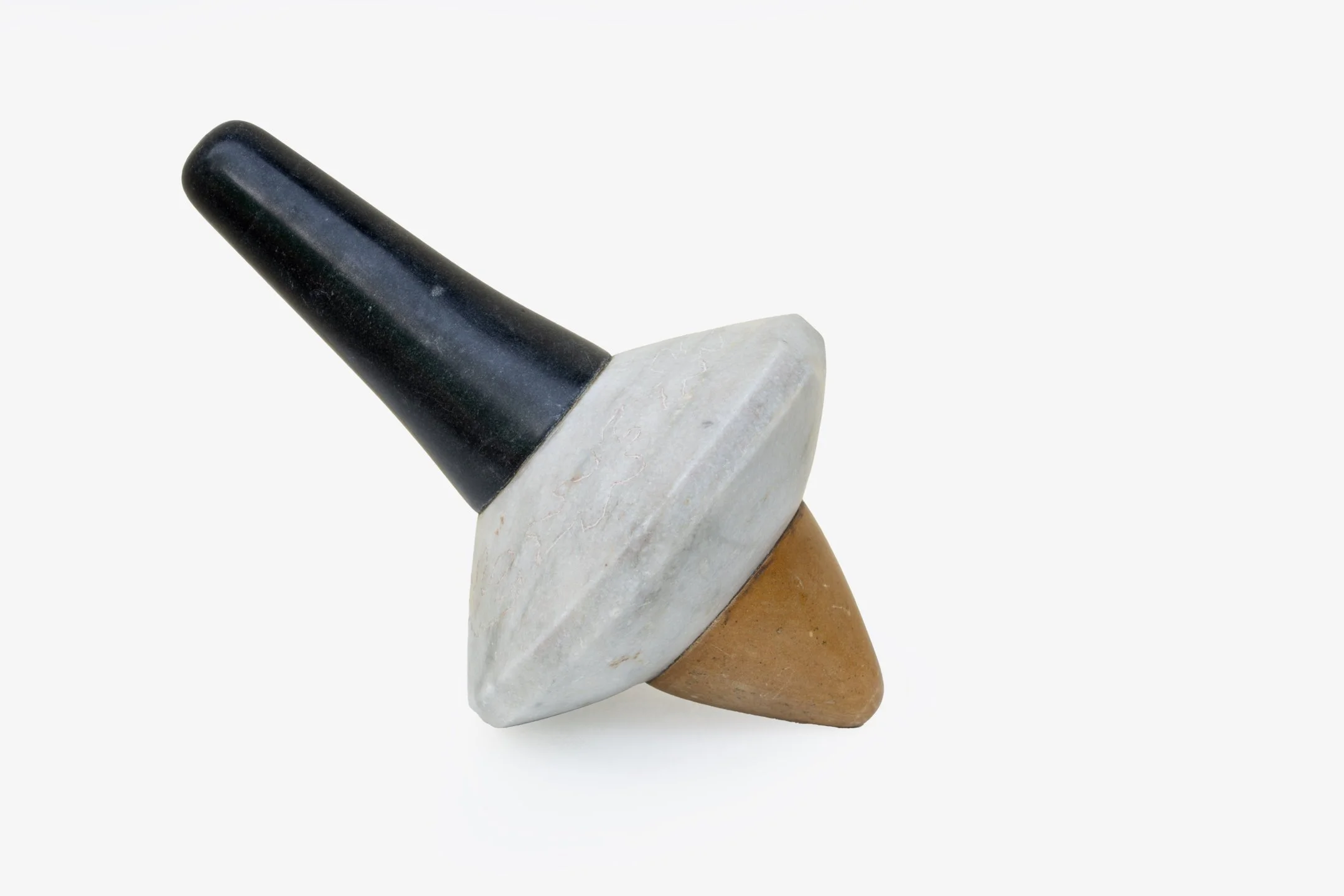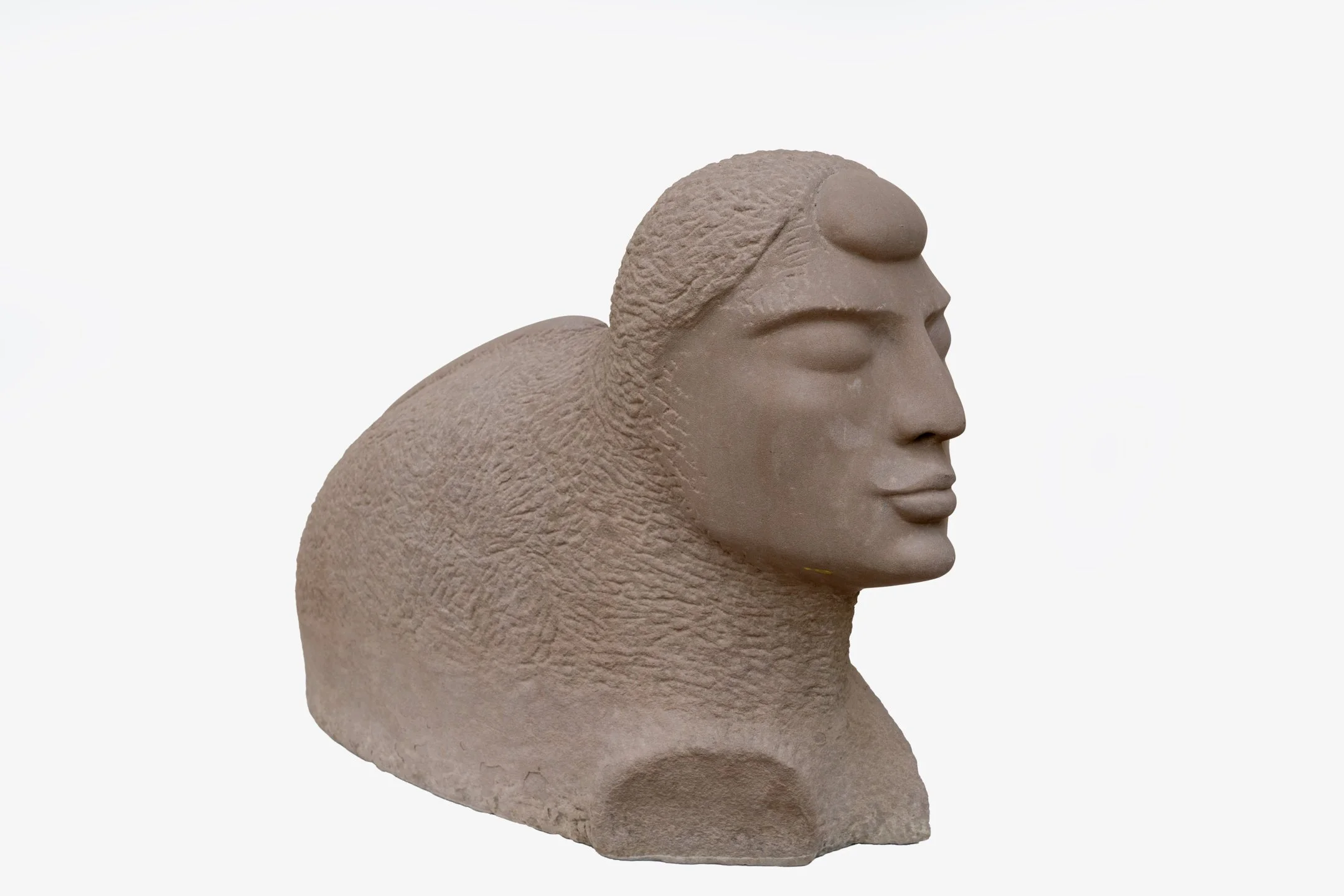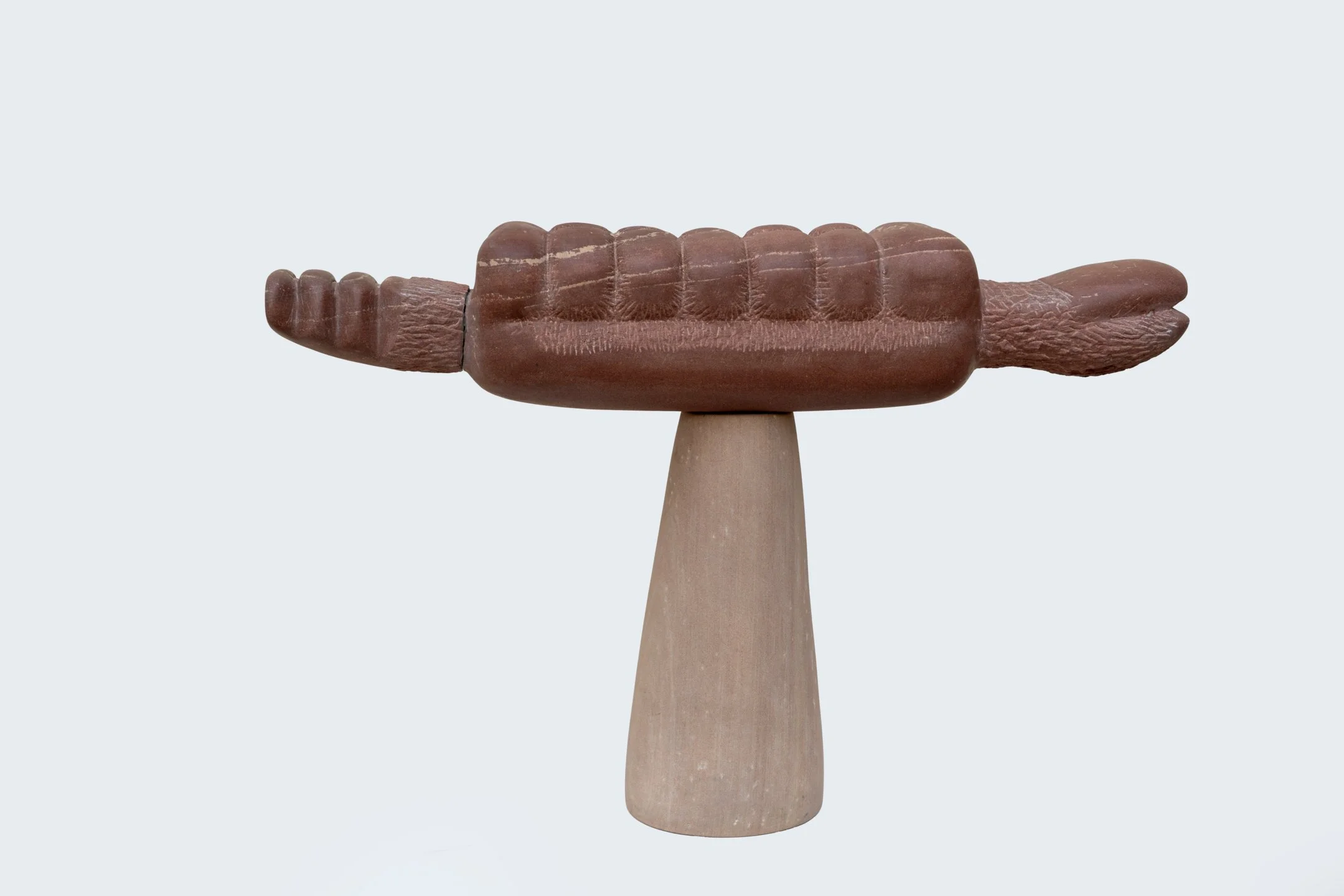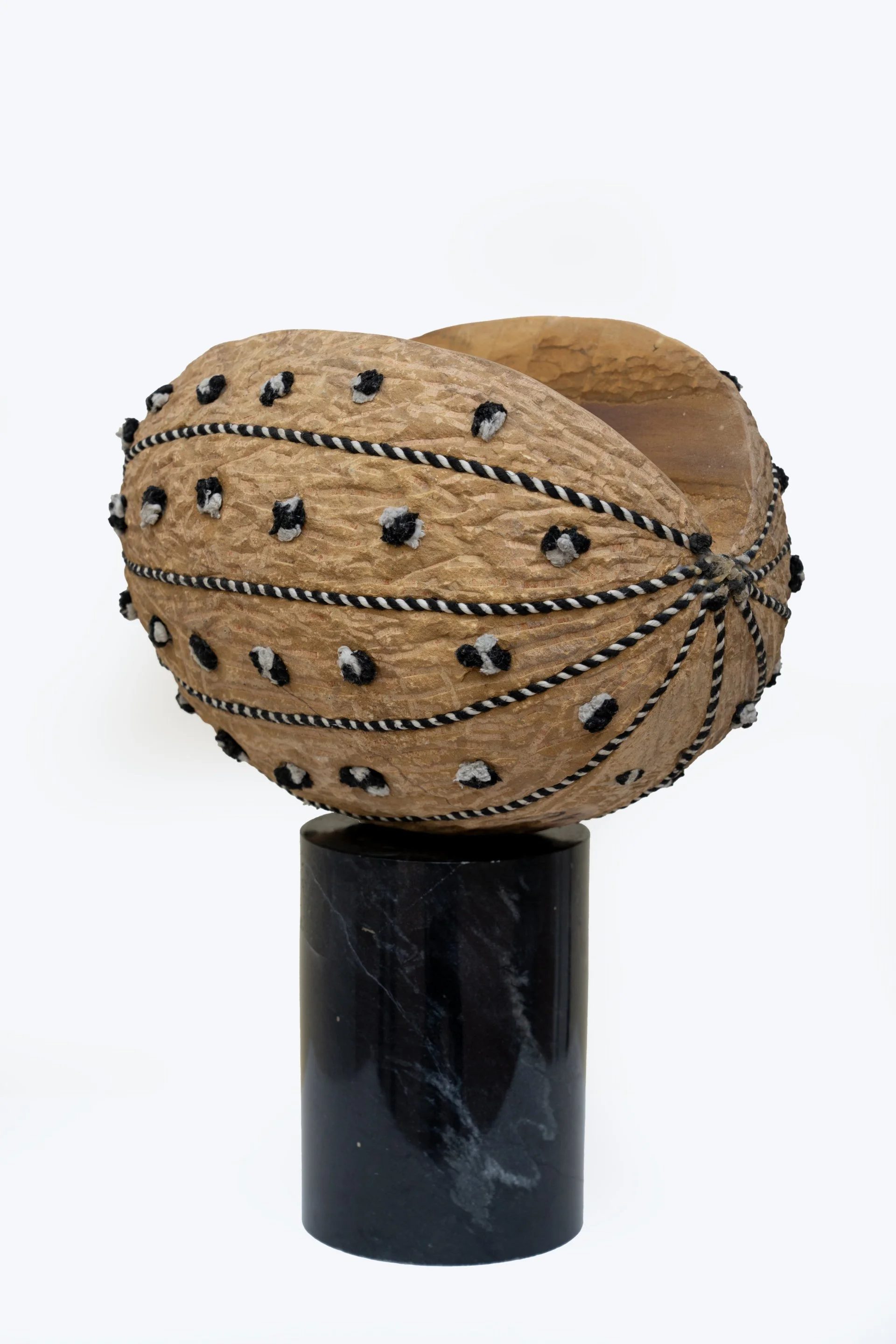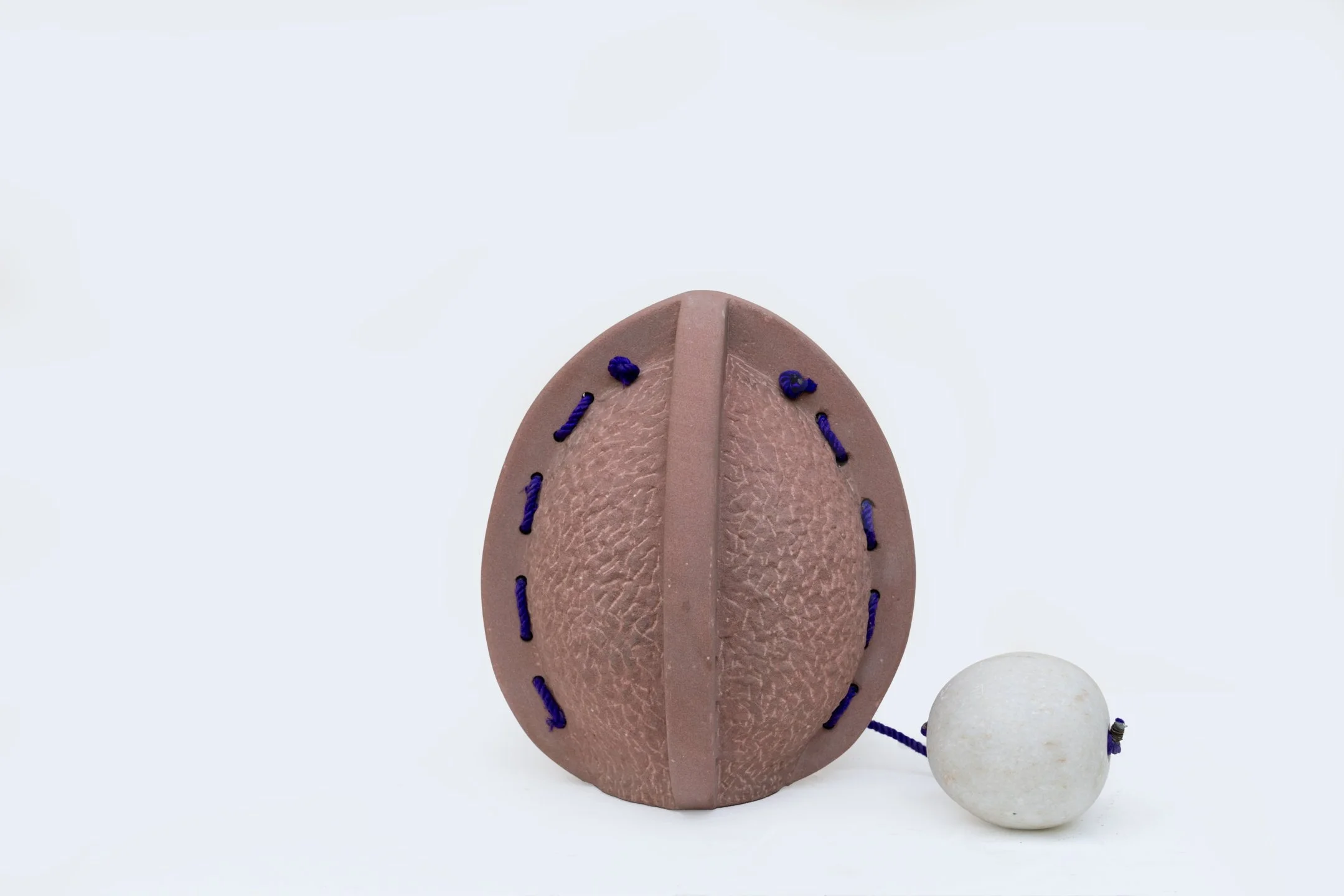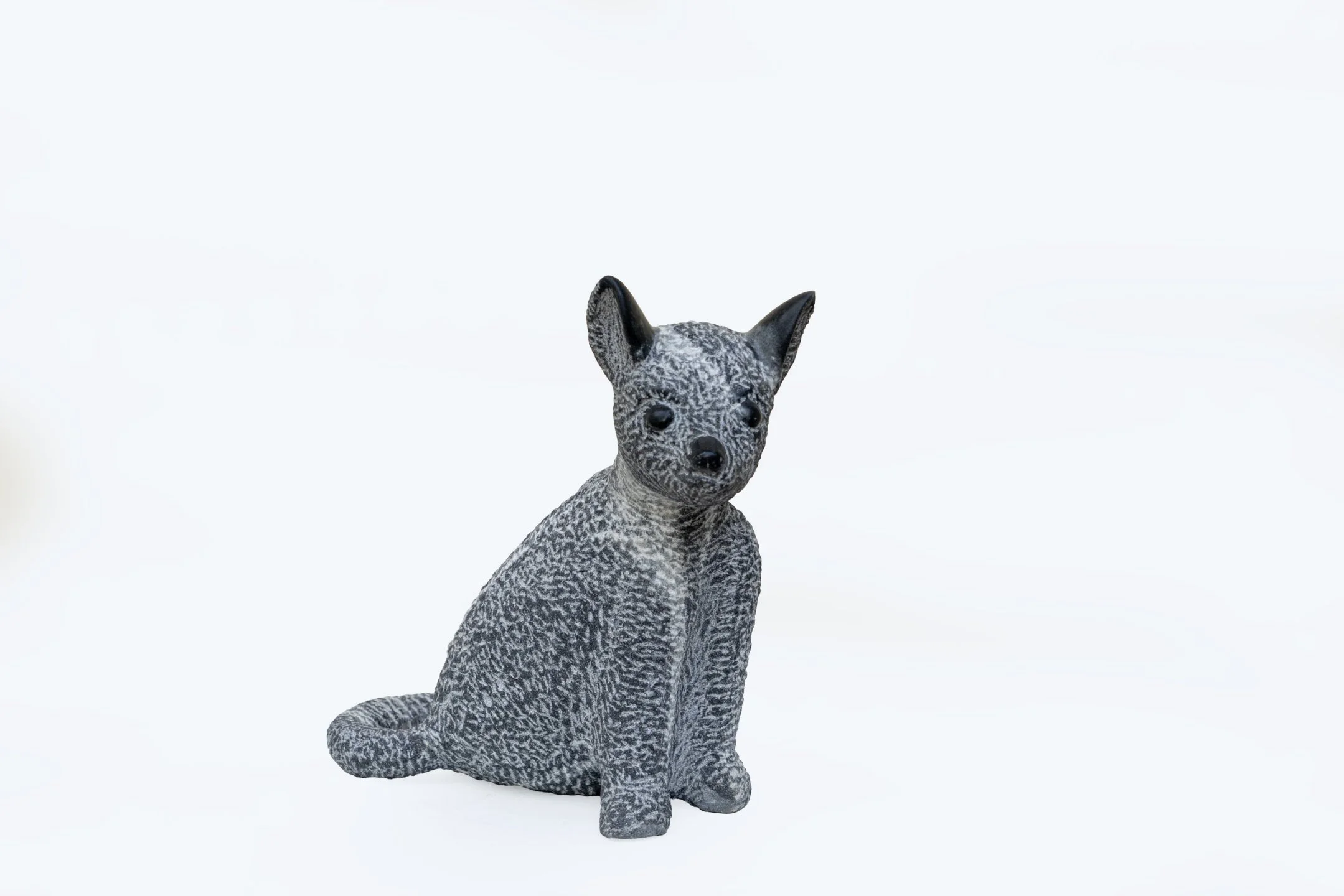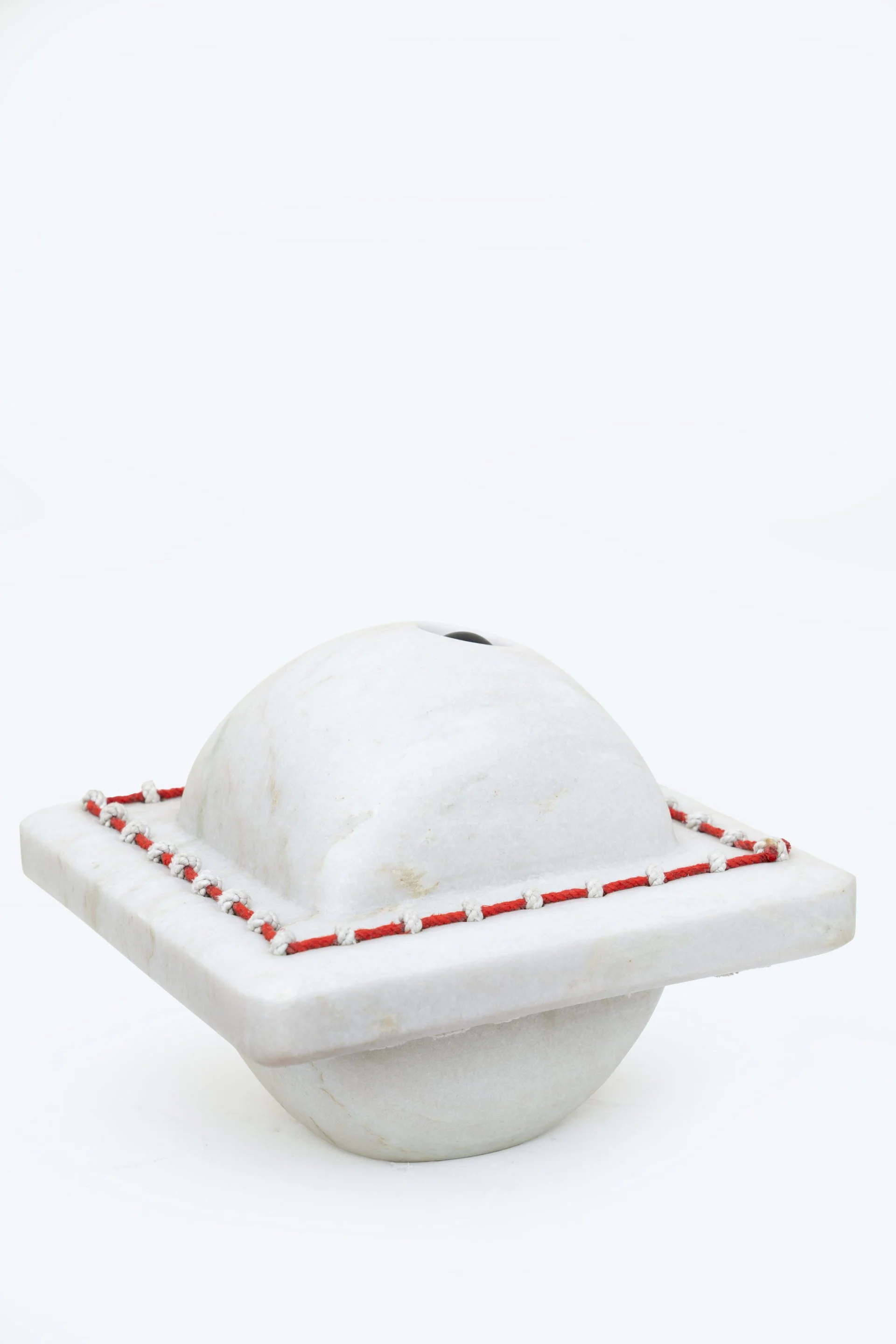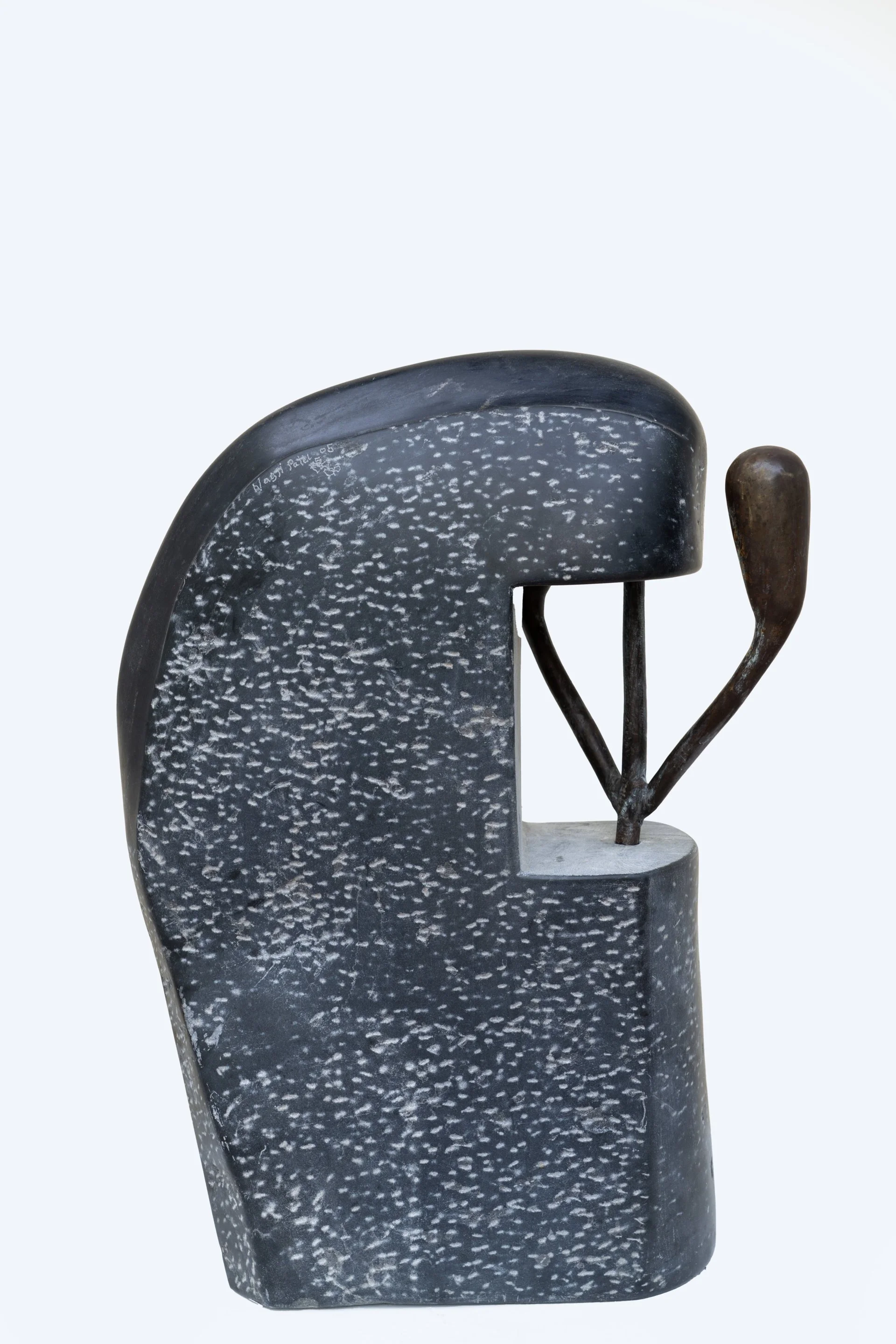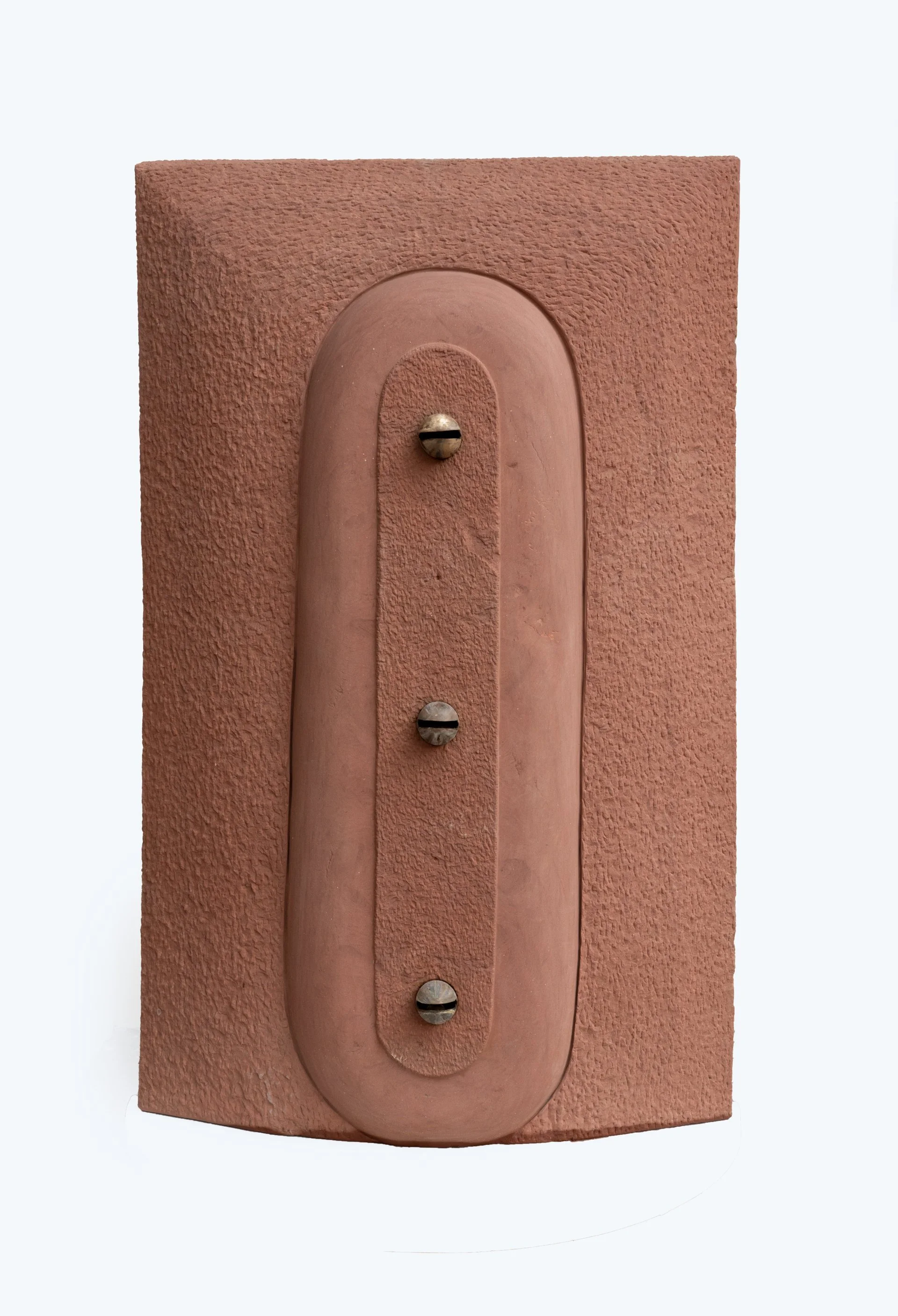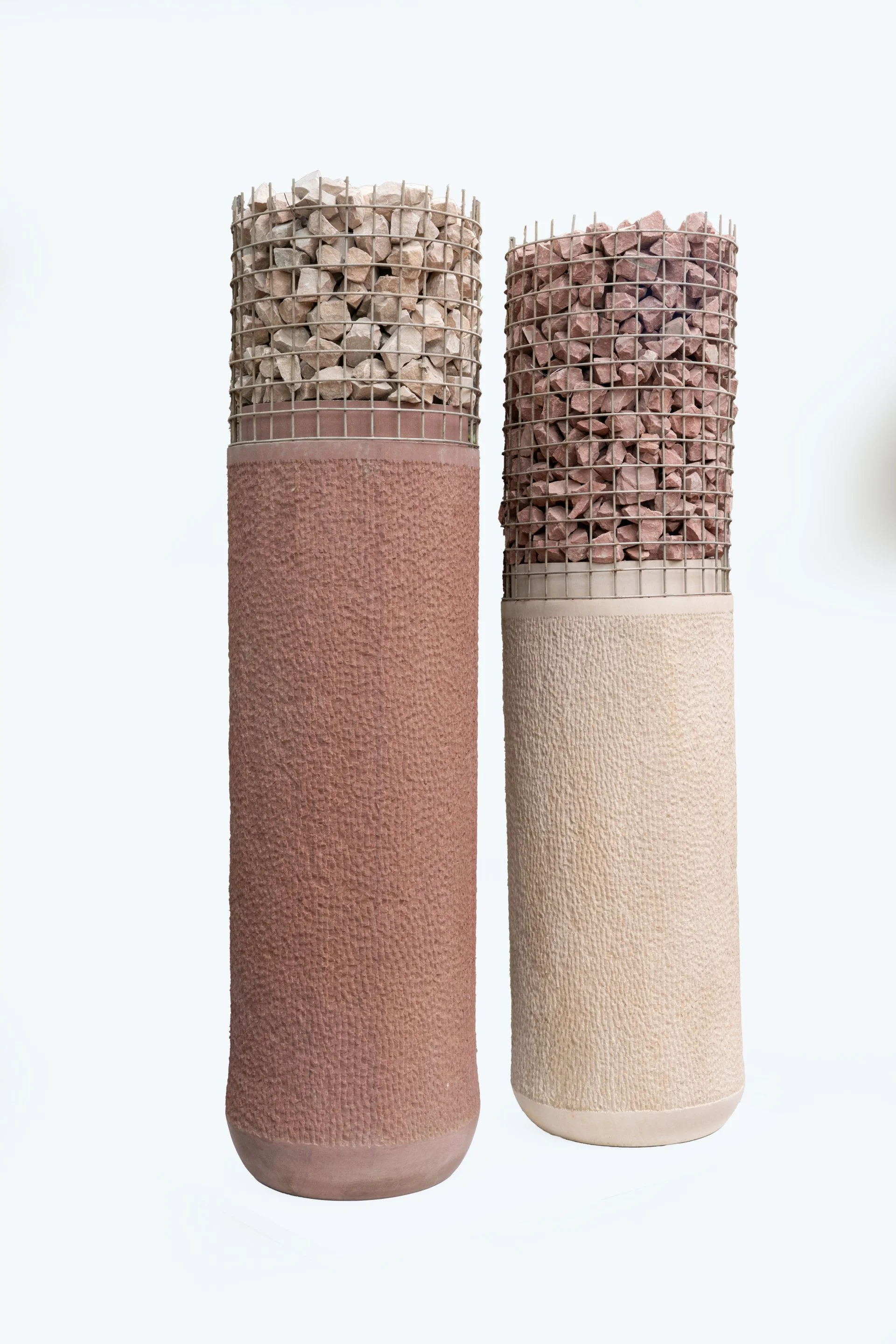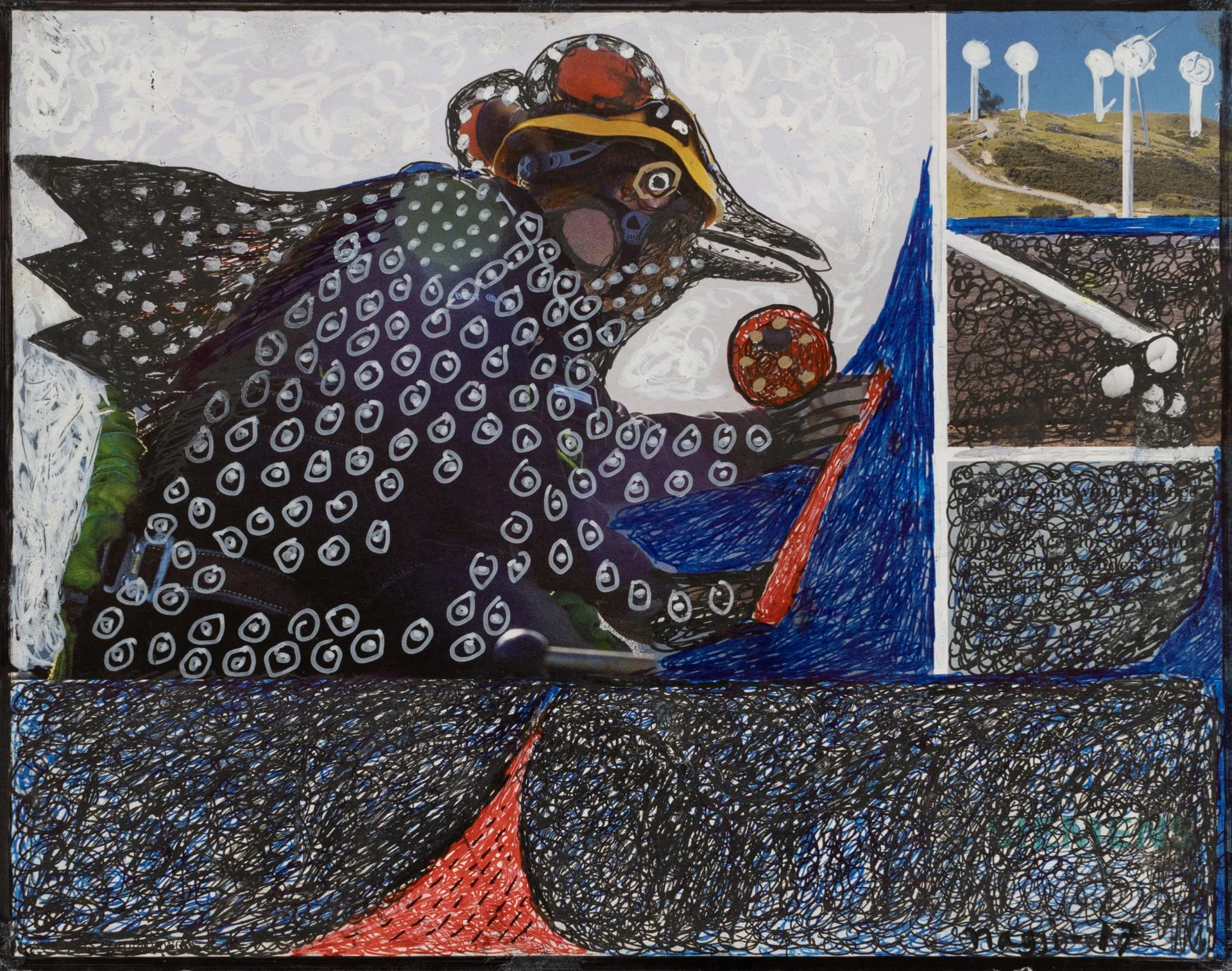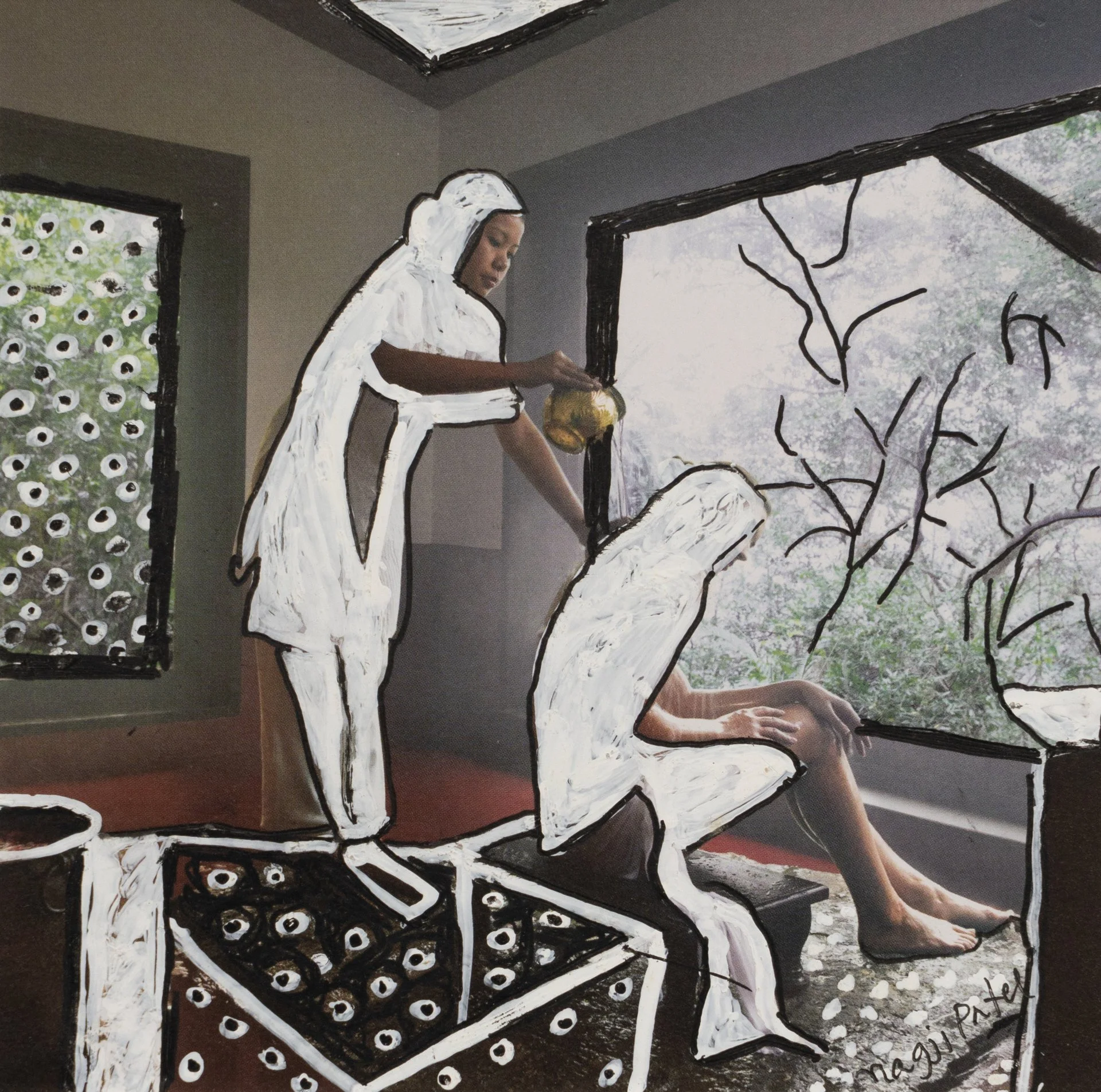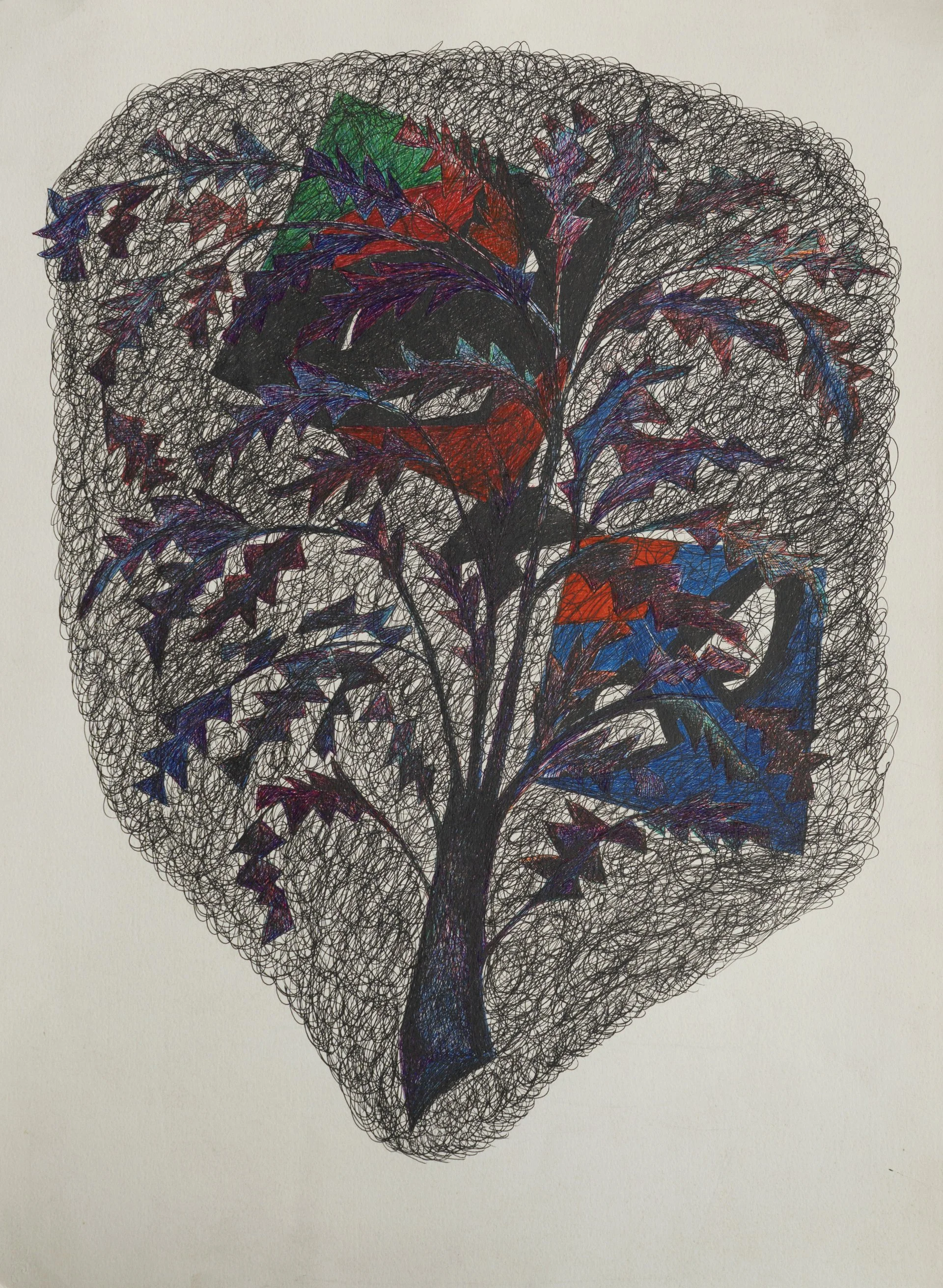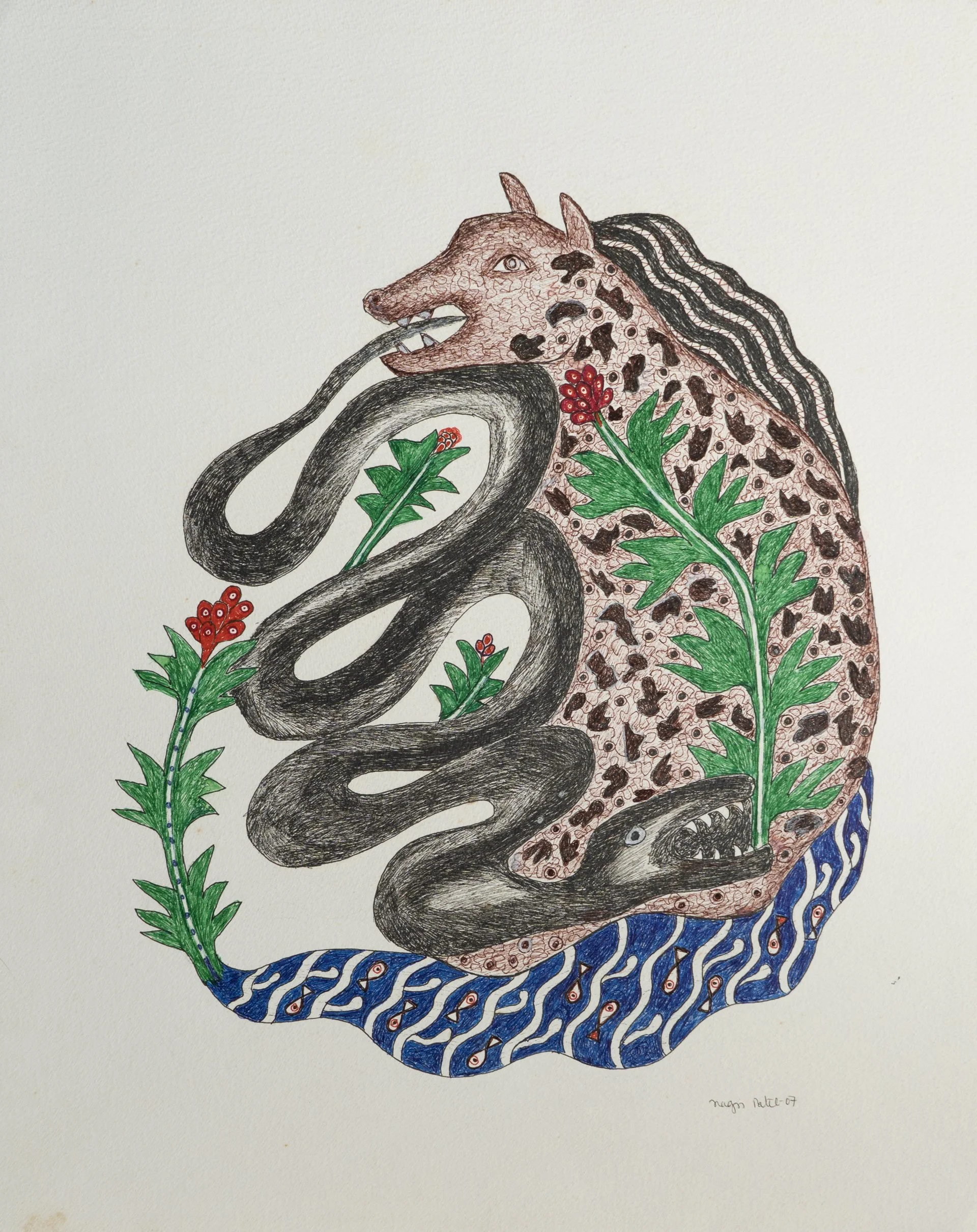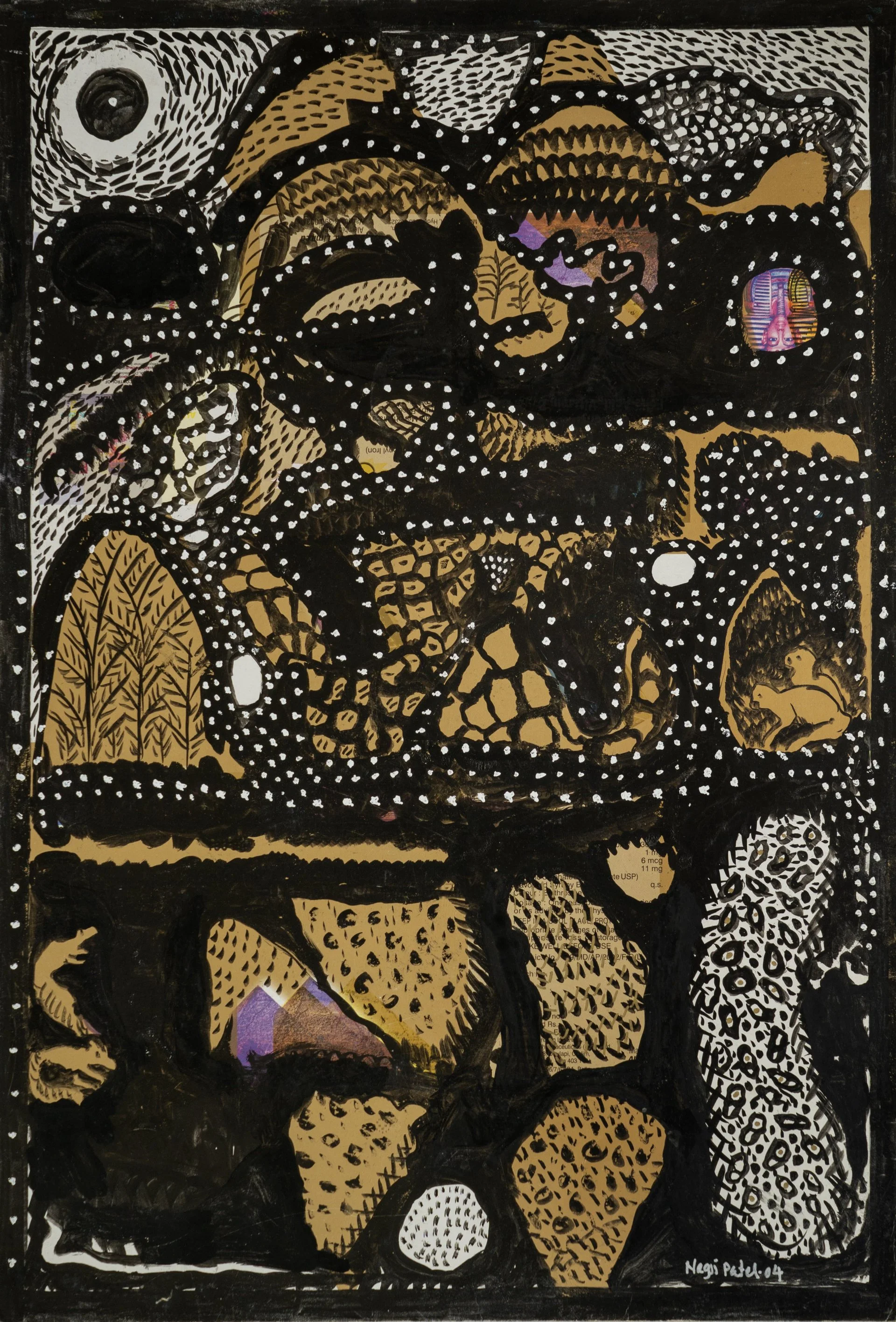
Nagji Patel: Still, They Speak
July 26 - August 20, 2025 at Akar Prakar, New Delhi
To stand before a sculpture by Nagji Patel is to encounter a distilled quietude, a stillness, in which the form, balance, and texture are held in perfect tension.
In over six decades of his practice, Patel developed a sculptural language that echoed his expertise in the medium of stone, while showcasing a uniquely modernist aesthetic. The exhibition, ‘Still, They Speak’, attempts to trace the arc of a career that exemplifies a grounded and disciplined approach to an artistic practice, even with his monumental oeuvre.
Born in 1937 in Juni Jithardi, Gujarat, Nagji Patel belongs to a generation of Indian artists that came of age in the post-Independence era. At a time when artistic identities witnessed a fundamental shift, as a student at the Faculty of Fine Arts, M.S. University of Baroda, Patel and his contemporaries were more interested in drawing from indigenous traditions, artisanal knowledge, than dogmatic colonial practices. While many of his peers in the 1960s and ’70s were pushing the boundaries of figuration, abstraction, performance, and installation, Patel remained committed to the sculptural form, rooting his practice to the slow, physical encounter between hand and material.
For Nagji, the choice of medium, whether it was granite, sandstone, marble or wood, was never incidental. These are materials that demand a deep and often prolonged engagement and continuous research. While many media in sculpture require a buildable approach, stone and marble follow a more shedding technique. For Patel, this opposition is not a hindrance but a source of meaning. The chisel and the hammer are not merely tools but instruments of negotiation, through which the sculptor listens and responds to the latent possibilities of the block. He believed that every block of stone had a story to tell and his work, to discover it. In this sense, the title of the exhibition, Still, They Speak, is not merely literal but also emblematic of Patel’s practice, baring, elemental and meditative.
His drawings and sketches are an extension of this approach. Throughout his oeuvre, we observe an inclination towards nature, agriculture, living forms, and his childhood memories of toy making, reflecting a deep connection to the earth and his upbringing in a farming family. Yet these compositions and forms rarely lapse into the descriptive. Instead, they hover at the edge of recognition, inviting touch as much as vision. His forms always played with textures, sometimes bore a luminous approach and a rough-hewn at other times. Works such as the Abacus or Implement reveal a sensitivity to volume and constraint, to the hidden dynamism of natural forms.
This sense of introspection became a hallmark of Patel’s sculpture. His forms do not shout; they whisper. Their power lies in their restraint. They echo the traditions of temple sculpture and folk carving, but they also converse with modernist masters such as Constantin Brâncuși and his mentor Sankho Chaudhuri; artists who, like Patel, sought to distil the essence of form without abandoning its sensual and spiritual charge.
Crucially, this survey exhibition brings together key works from the artist’s oeuvre while also opening up to his process, through archives and drawings. We see not only the finished object but the durational labour that produces it—the dust, the rhythm, the waiting. In an age increasingly dominated by digital mediation and physical alienation, Patel’s practice is a reminder of the potency of slowness, of repetition, of staying with the material.
Still, They Speak is therefore not just a tribute to Nagji Patel’s extraordinary contribution to Indian art. It is also an invitation to return to the physical, the contemplative, and the deeply human act of making. Patel’s sculptures do not speak in grand narratives or ideologies. They speak in weight, in touch and the simplicity of its form. Thus offering something rare: a space for presence and silence.
- Siddhi Shailendra
Abacus | Stone | 39 x 45 x 14 in
Temple | Marble Metal | 25 x 11.5 x 11 in | 2007
Abacus 3 | Stone | 27.25 x 27 x 5.5 in
Untitled | Sandstone | 8 x 16 x 12 in | 2008
Bird | Pink marble | 9 x 12.5 x 15 in | 2004
Untitled | Black, white & yellow marble | 10.5 x 9.5 x 11 in | 2015
Untitled | Sandstone | 425.5 x 12 x 19 in | 1989
Snake | Sandstone | 16.5 x 25 x 6 in | 2006
Untitled | Yellow Marble, String | 9 x 13 x 10 in | 2014
Untitled | Pink Sandstone, String, Marble | 10 x 19 x 10 in | 2014
Animal 3 | Granite | 13 x 12 x 8 in | 2016
Implement | Sandstone & Wood | 28 x 10 x 7 in | 2001
Untitled | Marble, String | 9 x 12 x 12 in | 2024
Snake | Sandstone | 16.5 x 25 x 6 in | 2006
Lake | Sandstone | 6.25 x 15 x 15 in | 1992
Temple | Sandstone & Brass | 65 x 39.25 x 14 in | 2007
Columns | Sandstone & Steel | 76 x 19.2 x 19.2 in | 2007
Untitled | Mixed Media on Paper | 6.75 x 8.5 in | 2017
Untitled | Mixed Media on Paper | 5.25 x 5.5 in | 2017
Untitled | Pen & ink on paper| 30 x 22 in
Untitled | Pen & ink on paper| 15.25 x 16 in | 1997
Mexico | Pen & ink on paper | 20 x 16 in | 2007
Panchmadhi | Mixed media on paper | 20.5 x 14 in | 2004
Untitled (Inscription at Back: Drawings & Sculpture 1987) | 14.25 x 10 in
Untitled | Pen & ink on paper| 14.75 x 11 in
Untitled | Pen & ink on paper | 10 x 13 in
Nagji Patel (1937-2017)
Born in Gujarat to a family of farmers, this artist's early years were spent crafting clay toys alongside other village children, sparking a lifelong passion for sculpture. Initially enrolling in the painting course at the Faculty of Fine Arts, M.S. University in Baroda, he soon shifted to sculpture, finding it a more intuitive medium. He earned his M.F.A. in sculpture in 1964, the same year he received a travelling scholarship from the Government of India. This opportunity allowed him to visit quarries across the country, where he engaged with stone carvers, deepening his understanding of the material and its possibilities.
Patel's sculptures are distinguished by a unique interplay of polished and rough stone surfaces, a technique inspired by the historical sculptures of Badami and Mahabalipuram. In these ancient works, centuries of human touch have polished certain areas, while others remain in their natural state. Patel adopted this approach in his own work, creating pieces that invite both visual and tactile exploration. He was particularly drawn to carving, enjoying the sensuous qualities of marble, the warmth of sandstone, and the textured surfaces of granite and wood. This sensibility also extended to his drawings and mixed-media works, informed by his three-dimensional forms.
Throughout his career, Patel received numerous accolades, including the Gujarat State Award (1962-64), the Lalit Kala Akademi National Award (1976), the Gaurav Puraskar (1997), and the Aditya Vikram Birla Kala Shikhar Puraskar (2011). His sculptures are installed in prominent locations worldwide, including Seoul Olympic Park in Korea, Arandjelovac in Serbia, the Noguchi Museum in Japan, and various sites in Baroda, where he built his career.
After nearly two decades, Nagji Patel’s works are once again brought to the public through the exhibition ‘Still, They Speak’ by Akar Prakar.
Patel passed away on December 17, 2017, leaving behind a legacy of work that continues to resonate globally.
